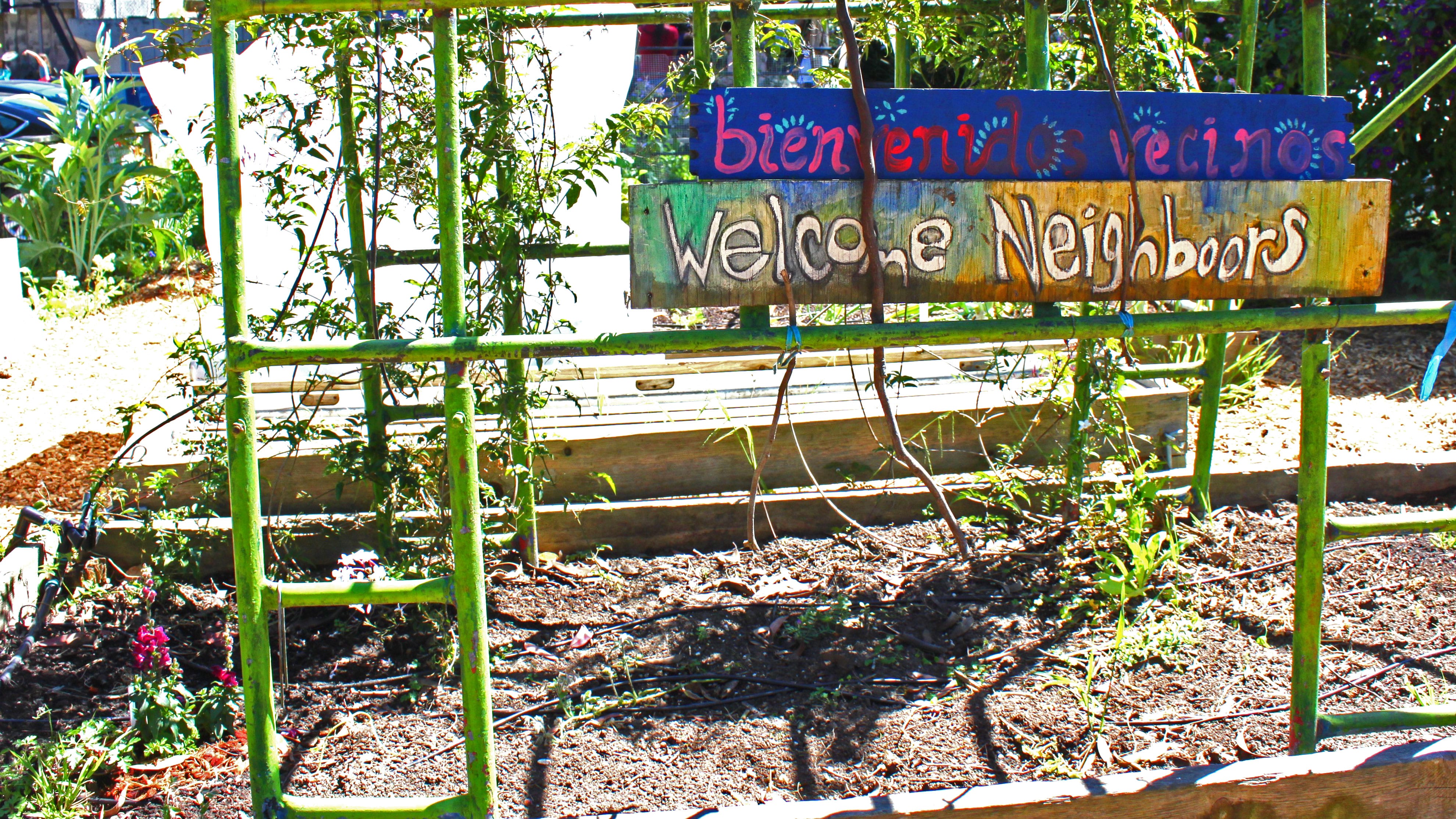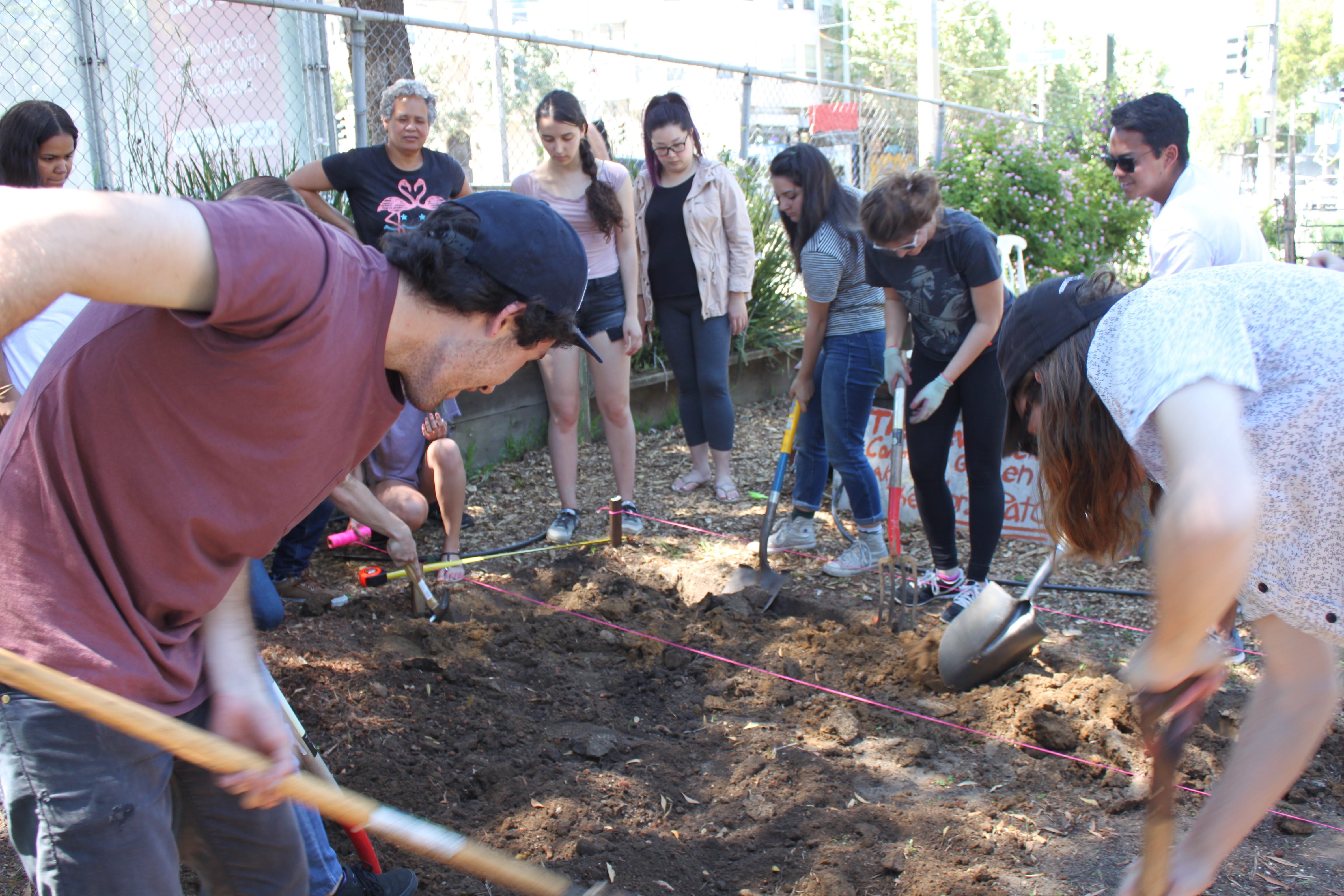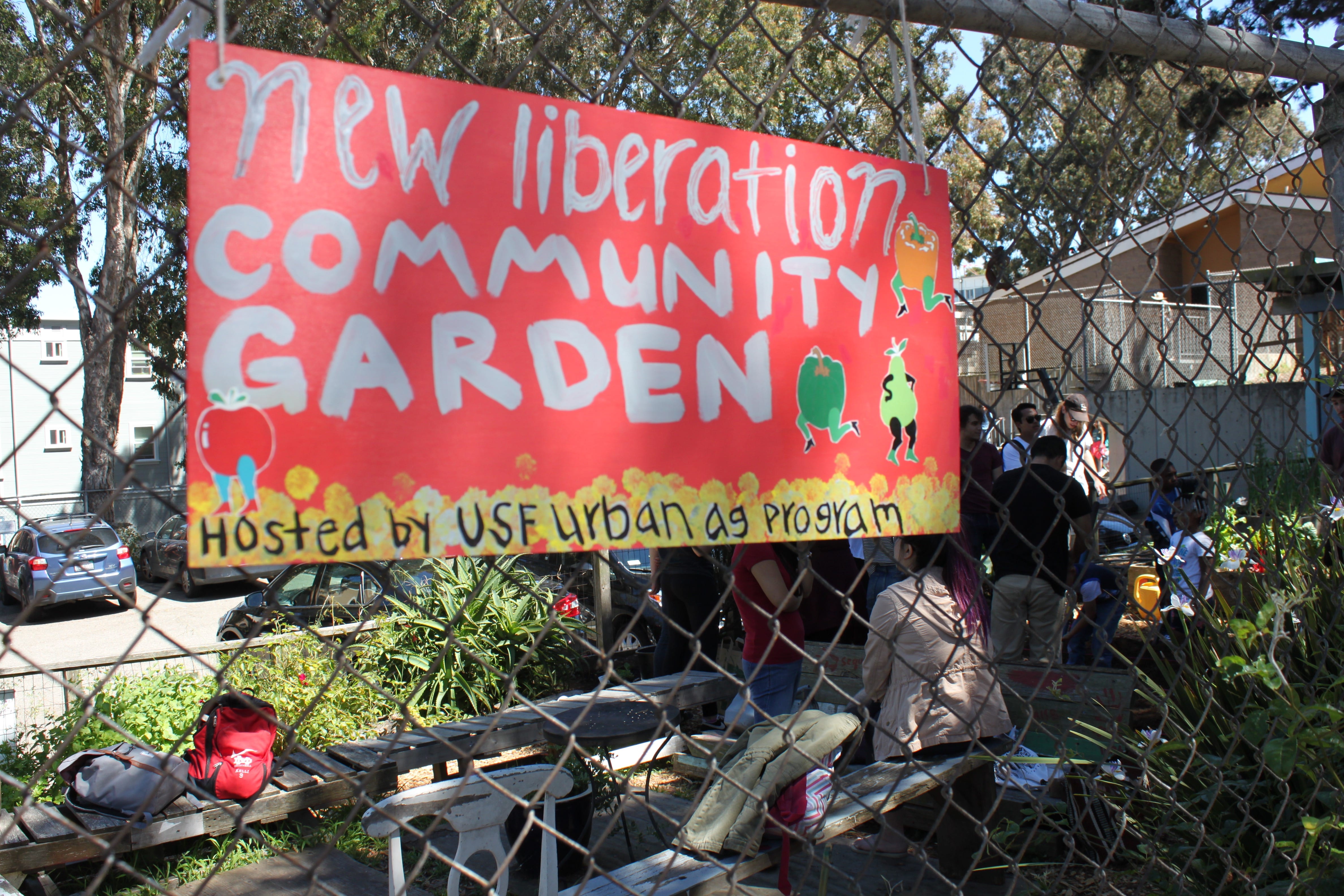
Growing Community Connections
In the McCarthy Center’s publication Profiles in Community-Engaged Learning, the work of faculty and community partners are highlighted. Community-Engaged Learning fulfils the public purpose of higher education. At the University of San Francisco, we offer approximately 70 undergrad and at least a dozen grad community engaged courses each year. In other words, USF faculty are creating a culture of civic participation, social responsibility and community activism that not only fosters student learning, but also contributes to a more equitable and just world.
Professor Melinda Stone is one such faculty member spoke in the publication on the community-engaged course, Community Garden Outreach.
Describe your community-engaged course.
Community Garden Outreach is a course that Seth Wachtel and I created 11 years ago when we first conceived of the Garden Project Living Learning Community (GPLLC). Eleven years ago the university gave their blessing for us to transform, with the students enrolled in the GPLLC, the approximately 1/8 acre plot at the eastern base of Lone Mountain set back and up from the education building parking lot. We inherited a kind of backwoods dumping ground, full of blackberry bushes and foxholes that ROTC used as a training grounds for grenade trainings and within a year the space was clearly on its way to become what it is today – a thriving community garden open to anyone on campus. In the four years that the GPLLC was in play, the Community Garden Outreach (CGO) course worked with multiple partners, as we had students visiting numerous community gardens in the bay area to not only assist these vibrant spaces but to learn from them as well. The course was immersive in that way. The students volunteered at gardens and farms all over the bay area and the hands-on knowledge they gained out in the field all came back to our USF garden to roost. Everyone seemed to benefit.
Community Garden Outreach continues. However, it is now offered through our Urban Agriculture Minor. We offer three sections of the course each semester and each instructor teaches it in their own unique way. However, the basic tenants are still at the heart of each class: grow food for community, learn to cook food for community. For the past six years CGO has focused on ensuring that the food grown in the USF Garden is enjoyed by the USF community through our monthly campus farm stands and our free community dinners at St. Cyprian’s Church and New Liberation Church.
We cannot grow enough food in our small community garden to provide for our community dinners, so we teach our students how to glean food, and through this activity give them a first-hand experience of food waste issues and how to mitigate them. We glean food from our campus dining hall. Food that would otherwise go to waste is saved and reincorporated into our monthly community dinner feasts. We glean from farmers markets and the San Francisco Wholesale Produce Market. Produce that is perfectly fine but has lost its attractiveness is rescued and our students turn it into delicious soups, salads, stir-fries, and pizza toppings. It is a challenge and one of the most creative aspects of the class. I think our dinner making could make a very entertaining reality TV show, but that is not the point. The main focus is providing students with the space to rise to the occasion, take the skills they are learning and put them into practice to serve the community. Every dinner is different and every dinner tells a unique story.
What have been the positive outcomes or impacts of your course for students and community (partners)?
For me I think the biggest positive outcome has been the organic way that students in the CGO course create community. It is crucial for us as a society to learn how to work collectively, to come together, figure out what the task at hand is, what each of us has to offer, listen to one another, not be afraid to try new things, learn from mistakes, enjoy the process, and show up ready to engage for the common good. Our community partners, St. Cyprian’s and New Liberation Churches, love that we utilize their resources – kitchens and dining halls- to “minister” to the community. These churches, and many like them throughout the city, have dwindling parishes and do not have the energy to provide community services, so our partnership is a win-win. Our students learn community building and how to work cooperatively by creating a free community dinner from scratch each month and our community partners are thrilled that our students are breathing life into their churches.
For me the biggest challenge facing me right now is that I no longer live in San Francisco. I am recognizing that it is very difficult to be the best community partner I can be when I do not live in the neighborhood. This dilemma is compounded by the fact that our community partners, St. Cyprian’s and New Liberation Churches, have parishes that commute on Sundays for church but are not present in the neighborhood the rest of the time. How do we create true community engagement when we are all commuting and are only experiencing the community for short blasts? To me it does not feel authentic. I am in the midst of addressing this, feeling very unsettled, and not quite sure what to do.
What inspires you to integrate community-engaged pedagogies into your courses?
I love community-engaged learning because I feel it is the only way to teach students how to create community. It is messy, there is no right way, it requires patience, listening, observing and cooperative action. I truly believe that through Community Garden Outreach, students tap into a deep human need to connect to the soil that feeds us, recognize how we are beholden to the land, and we are only as healthy as the earth we are stewarding. We can read about all the problems, the challenges and all the issues facing us, and write critical papers about them. However, without considered action steeped in community spirit, we wither. It is important to have a balance.
This semester I have spent a good amount of time with my students engaging in something I call “mindful weeding.” We spend 20 minutes in silence tending to the garden, mostly weeding. It is through this tending that my students find a connection to nature and ultimately feel a sense of responsibility for it. Students ask me if they can come to the garden and tend to it outside of class time. Yes. Yes. Yes. I am seeing the benefits of this practice and am beginning to recognize that our community partners are also right below our feet – the rich soil feeds us in so many ways. We may be passing through, however if we connect to the earth here and feel the benefits of that connection, we know we can do it anywhere.
What advice would you give other faculty interested in integrating community engagement into their courses?
Connect with professors who are teaching community engagement courses, talk with staff at the McCarthy Center, baby steps. A considered approach is important.
- USF Garden at New Liberation Church
- Community Garden at New Liberation Church
- Fruit of our Labor






